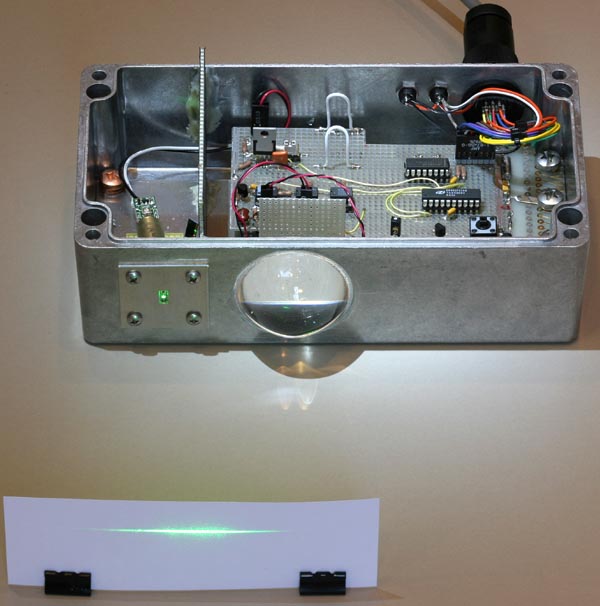Rain or Shine - NOT!
Most folks like to brag that their services are working, "rain or
shine." We're different -- you sure don't want to run a telescope
in the rain; ditto for daytime (when our 6' telescope becomes a
six-foot solar furnace). So, we've implemented a "daylight detector,"
and a rain detector: either will prevent startup of observations,
and either will terminate current observations, via the control
computer (or by itself, after 2 minutes). (If the computer crashes,
the same circuitry will close the roof, regardless; likewise for a
power failure) This photo shows rain (left hand) and shine (right
hand) detectors. (Power fail comes in through the barrier block on
right; computer crash is detected by the "watchdog," which stops
seeing activity through the serial port connection.)
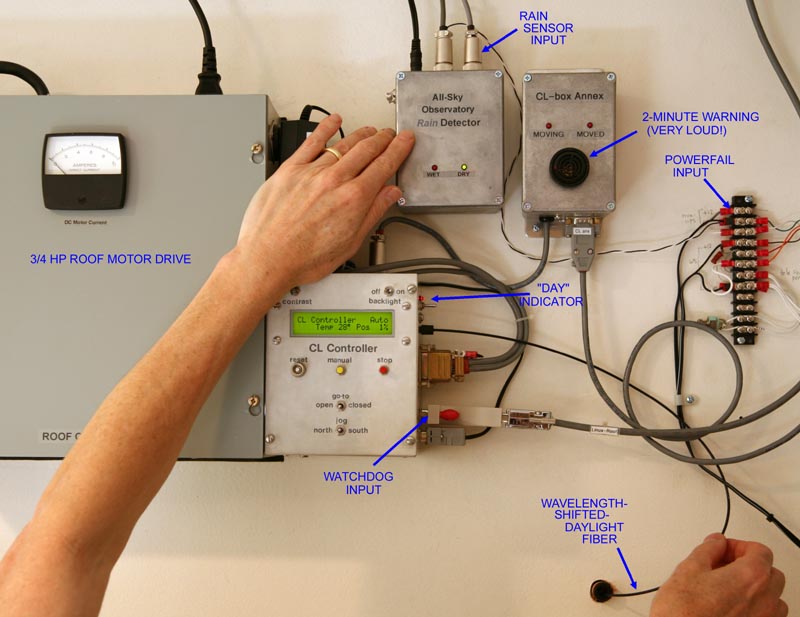
Rain Detector - I
It's simple - an interdigitated array of conductors on a circuit
board, and the circuitry to go with it.
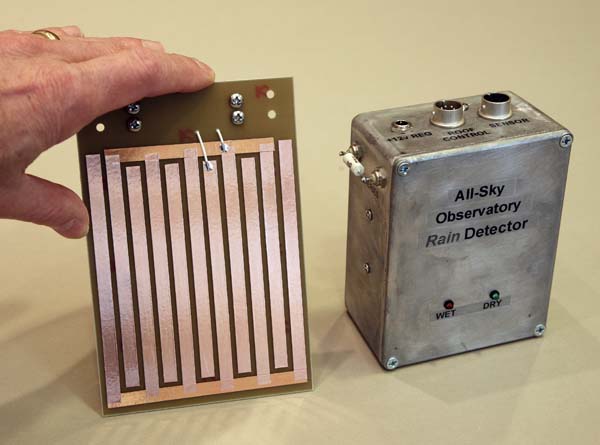
Rain Detector - II
You don't want it to trigger on dew, or a bit of moisture in the
air; you also want to know about snow. So we put heating resistors
on the bottom side. Five watts does the trick.
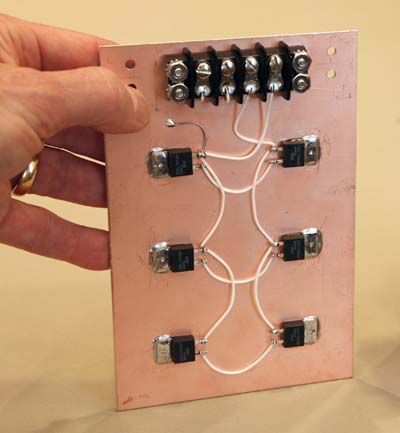
Rain Detector - III
We mounted the sensor up high, near the south end of the east wall.
In this shot you can see the edge of the movable roof, above, with
its wooden cam that stops northward motion when the roof is fully open.
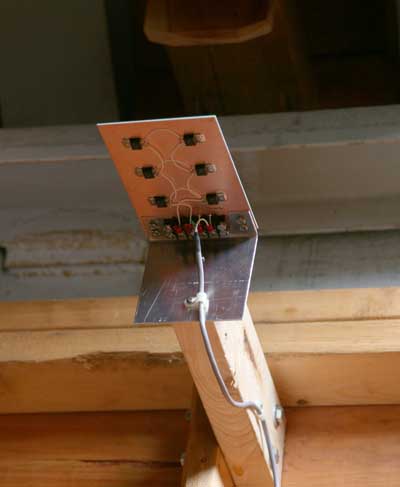
Rain Detector - IV
A fearless high-altitude climb produced this shot of the installed
rain detector. We tested it by tossing some water up and over.
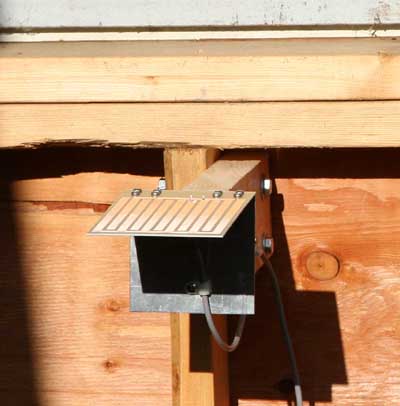
Laser Rain Detector
Meanwhile, back at the lab we've had Will Galvin designing and
building a high-tech raindrop detector. It works (we hope) by
detecting backscattered green laser light from individual drops
as they fall through the fan-shaped beam. In this shot you can
see the laser (lefthand compartment), and its beam pattern, spread
horizontally by a cylindrical lens. The big eyeball is a condenser
lens, which images the sensitive area onto a strip photodetector.
Transimpedance amplifiers and a microcontroller complete the setup.
The whole thing is watertight, and now sits outside, up on the
east wall of the observatory building. Curtis has written much
of the code, and is now hoping the thing will work half as well
as the rock-simple interdigitated sensor described above.
